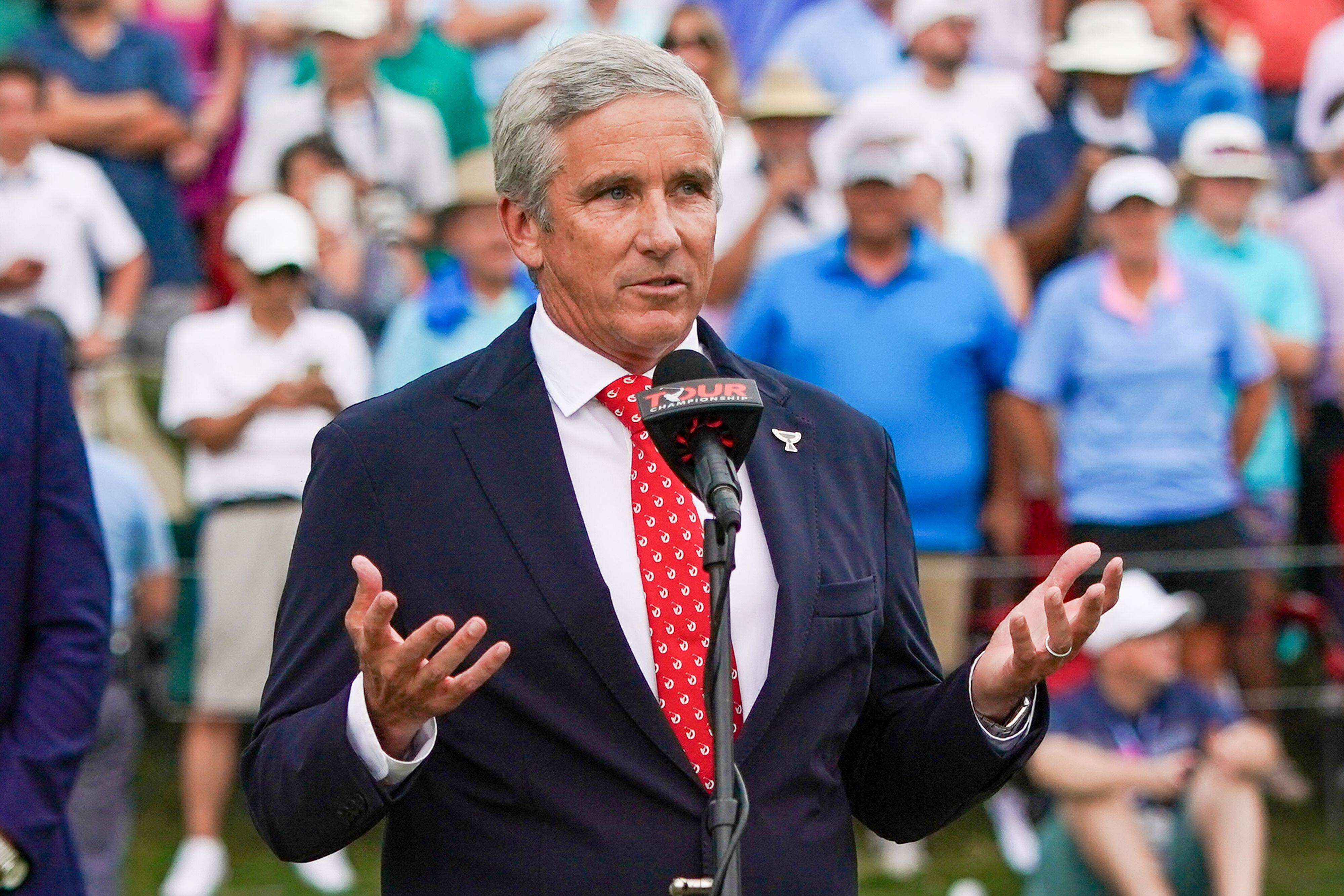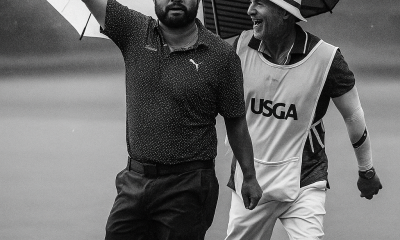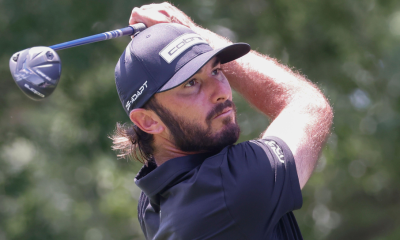Opinion & Analysis
Elliott: A balanced look at the 2026 PGA Tour changes

Before we know it, the 2026 PGA Tour season will be here, and much has been made of the significant changes in store for the professional game at that time. While transformation can often lead to skepticism, it also offers a promising opportunity for growth and innovation in a sport with a rich history, like golf. As we delve into the upcoming developments, it’s important to balance our critical assessments with an optimistic outlook for the future.
At the core of these changes is an effort to speed up play through reduced field sizes and increase top player participation in all events, not just the top-tier ones. Elevated events and a reimagined schedule aim to draw top-tier talent, ensuring fans get to see the best players, week in and week out. For fans, there’s nothing quite like watching icons like Rory McIlroy and Scottie Scheffler compete in high-pressure tournaments. However, the Tour should consider the implications of this focus on elevated events, particularly the risk of overshadowing smaller tournaments that play a crucial role in the sport’s ecosystem. These lesser-known events provide vital platforms for emerging talent and contribute significantly to local economies and charitable causes.
Focusing too heavily on elite competition could unintentionally undermine the grassroots foundations that have long supported the sport. The PGA Tour has historically been a launchpad for up-and-coming players, and we must ensure that these pathways remain robust. Balancing the allure of high-stakes tournaments with the opportunities afforded to aspiring golfers is essential if we hope to preserve the Tour’s legacy.
In terms of the slow play issues that exist in professional golf, the argument that there are simply too many players in a field, particularly during the time of year when they are chasing daylight, has a lot of merit indeed. However, and this is just my opinion, how about doing a better job policing slow play with the current field sizes? New slow-play policies were put in place for the 2024 PGA TOUR season, which were intended to curb these issues, but how often do we really hear about strokes being given for those in breach of these? Sure, smaller fields will, in theory, work, but what happens when they eventually stop working? Too many up-and-coming players will have already lost their livelihood at that point because of a reduction in opportunities for them to play.
Now, let’s talk about money, a topic that, in my opinion, has become far too much of golf’s focus of late. The restructuring of how prize money is distributed, which goes hand-in-hand with reduced field sizes, warrants careful consideration in terms of equity and sustainability. I get it; increased financial incentives for top performers are important; however, there’s a commensurate risk of alienating those still striving to establish themselves on the PGA Tour or any of its affiliate tours. It’s critical for the PGA Tour to devise a framework that ensures players at all levels can achieve financial viability, not just those already at the top. Reducing the number of guaranteed spots for players to retain a full Tour card from one season to the next may be a mistake for the future of the professional game.
Those who prove they can make it to the big stage desire the opportunity to prove they can win once they get there, which takes time in many cases. This is part of what drives the storylines fans so desperately want week in and week out. Sure, we want to see the biggest stars on the biggest stages, but at the same time, we all love those underdog stories, first-time winners breaking through or struggling former stars finding their way back to the winner’s circle once again.
A positive note moving ahead is the Tour commitment to engaging younger audiences through expanded media partnerships, which opens up exciting possibilities. Innovative technology, like enhanced broadcast features and interactive experiences, can attract a new generation of fans and breathe fresh interest into golf. Or take this year’s “Creator Classic,” which took place the Wednesday before the Tour Championship; the continuation of initiatives like this will surely bring in younger viewers. These initiatives demonstrate the Tour’s adaptability and willingness to evolve, which is a commendable approach in today’s sporting landscape.
As we look ahead to 2026, when the bulk of these approved changes come into play, let’s acknowledge both the critical aspects of these developments and the potential for optimism they may eventually foster in professional golf. The game, whether professional or recreational, needs to evolve with the winds of change. Staying stagnant won’t work in terms of sustainability. I recognize this and advocate for it. However, how you structure those needed changes, in this case, in the professional game, must be in the best interest of all stakeholders, not just the elite players.
Editor’s note: “My Take” will be an ongoing weekly series where Brendon shares his thoughts and opinions on various aspects of the game and industry. These are Brendon’s opinions and do not necessarily reflect those of GolfWRX, its staff, and its affiliates.
Reader, please support me by checking out my three weekly columns on RG.org. On Mondays, I present “The Starter,” which recaps the week gone by in golf. On Wednesdays, I give you “Fairway Focus,” which previews the week to come in golf. And on Fridays, I dish up the “Friday Fore-cast,” a look at what’s on tap for the upcoming weekend.
Opinion & Analysis
The 2 primary challenges golf equipment companies face

As the editor-in-chief of this website and an observer of the GolfWRX forums and other online golf equipment discourse for over a decade, I’m pretty well attuned to the grunts and grumbles of a significant portion of the golf equipment purchasing spectrum. And before you accuse me of lording above all in some digital ivory tower, I’d like to offer that I worked at golf courses (public and private) for years prior to picking up my pen, so I’m well-versed in the non-degenerate golf equipment consumers out there. I touched (green)grass (retail)!
Complaints about the ills of and related to the OEMs usually follow some version of: Product cycles are too short for real innovation, tour equipment isn’t the same as retail (which is largely not true, by the way), too much is invested in marketing and not enough in R&D, top staffer X hasn’t even put the new driver in play, so it’s obviously not superior to the previous generation, prices are too high, and on and on.
Without digging into the merits of any of these claims, which I believe are mostly red herrings, I’d like to bring into view of our rangefinder what I believe to be the two primary difficulties golf equipment companies face.
One: As Terry Koehler, back when he was the CEO of Ben Hogan, told me at the time of the Ft Worth irons launch, if you can’t regularly hit the golf ball in a coin-sized area in the middle of the face, there’s not a ton that iron technology can do for you. Now, this is less true now with respect to irons than when he said it, and is less and less true by degrees as the clubs get larger (utilities, fairways, hybrids, drivers), but there remains a great deal of golf equipment truth in that statement. Think about it — which is to say, in TL;DR fashion, get lessons from a qualified instructor who will teach you about the fundamentals of repeatable impact and how the golf swing works, not just offer band-aid fixes. If you can’t repeatably deliver the golf club to the golf ball in something resembling the manner it was designed for, how can you expect to be getting the most out of the club — put another way, the maximum value from your investment?
Similarly, game improvement equipment can only improve your game if you game it. In other words, get fit for the clubs you ought to be playing rather than filling the bag with the ones you wish you could hit or used to be able to hit. Of course, don’t do this if you don’t care about performance and just want to hit a forged blade while playing off an 18 handicap. That’s absolutely fine. There were plenty of members in clubs back in the day playing Hogan Apex or Mizuno MP-32 irons who had no business doing so from a ballstriking standpoint, but they enjoyed their look, feel, and complementary qualities to their Gatsby hats and cashmere sweaters. Do what brings you a measure of joy in this maddening game.
Now, the second issue. This is not a plea for non-conforming equipment; rather, it is a statement of fact. USGA/R&A limits on every facet of golf equipment are detrimental to golf equipment manufacturers. Sure, you know this, but do you think about it as it applies to almost every element of equipment? A 500cc driver would be inherently more forgiving than a 460cc, as one with a COR measurement in excess of 0.83. 50-inch shafts. Box grooves. And on and on.
Would fewer regulations be objectively bad for the game? Would this erode its soul? Fortunately, that’s beside the point of this exercise, which is merely to point out the facts. The fact, in this case, is that equipment restrictions and regulations are the slaughterbench of an abundance of innovation in the golf equipment space. Is this for the best? Well, now I’ve asked the question twice and might as well give a partial response, I guess my answer to that would be, “It depends on what type of golf you’re playing and who you’re playing it with.”
For my part, I don’t mind embarrassing myself with vintage blades and persimmons chasing after the quasi-spiritual elevation of a well-struck shot, but that’s just me. Plenty of folks don’t give a damn if their grooves are conforming. Plenty of folks think the folks in Liberty Corner ought to add a prison to the museum for such offences. And those are just a few of the considerations for the amateur game — which doesn’t get inside the gallery ropes of the pro game…
Different strokes in the game of golf, in my humble opinion.
Anyway, I believe equipment company engineers are genuinely trying to build better equipment year over year. The marketing departments are trying to find ways to make this equipment appeal to the broadest segment of the golf market possible. All of this against (1) the backdrop of — at least for now — firm product cycles. And golfers who, with their ~15 average handicap (men), for the most part, are not striping the golf ball like Tiger in his prime and seem to have less and less time year over year to practice and improve. (2) Regulations that massively restrict what they’re able to do…
That’s the landscape as I see it and the real headwinds for golf equipment companies. No doubt, there’s more I haven’t considered, but I think the previous is a better — and better faith — point of departure when formulating any serious commentary on the golf equipment world than some of the more cynical and conspiratorial takes I hear.
Agree? Disagree? Think I’m worthy of an Adam Hadwin-esque security guard tackle? Let me know in the comments.
@golfoncbs The infamous Adam Hadwin tackle ? #golf #fyp #canada #pgatour #adamhadwin ? Ghibli-style nostalgic waltz – MaSssuguMusic
Podcasts
Fore Love of Golf: Introducing a new club concept

Episode #16 brings us Cliff McKinney. Cliff is the founder of Old Charlie Golf Club, a new club, and concept, to be built in the Florida panhandle. The model is quite interesting and aims to make great, private golf more affordable. We hope you enjoy the show!
Opinion & Analysis
On Scottie Scheffler wondering ‘What’s the point of winning?’

Last week, I came across a reel from BBC Sport on Instagram featuring Scottie Scheffler speaking to the media ahead of The Open at Royal Portrush. In it, he shared that he often wonders what the point is of wanting to win tournaments so badly — especially when he knows, deep down, that it doesn’t lead to a truly fulfilling life.
View this post on Instagram
“Is it great to be able to win tournaments and to accomplish the things I have in the game of golf? Yeah, it brings tears to my eyes just to think about it because I’ve literally worked my entire life to be good at this sport,” Scheffler said. “To have that kind of sense of accomplishment, I think, is a pretty cool feeling. To get to live out your dreams is very special, but at the end of the day, I’m not out here to inspire the next generation of golfers. I’m not out here to inspire someone to be the best player in the world, because what’s the point?”
Ironically — or perhaps perfectly — he went on to win the claret jug.
That question — what’s the point of winning? — cuts straight to the heart of the human journey.
As someone who’s spent over two decades in the trenches of professional golf, and in deep study of the mental, emotional, and spiritual dimensions of the game, I see Scottie’s inner conflict as a sign of soul evolution in motion.
I came to golf late. I wasn’t a junior standout or college All-American. At 27, I left a steady corporate job to see if I could be on the PGA Tour starting as a 14-handicap, average-length hitter. Over the years, my journey has been defined less by trophies and more by the relentless effort to navigate the deeply inequitable and gated system of professional golf — an effort that ultimately turned inward and helped me evolve as both a golfer and a person.
One perspective that helped me make sense of this inner dissonance around competition and our culture’s tendency to overvalue winning is the idea of soul evolution.
The University of Virginia’s Division of Perceptual Studies has done extensive research on reincarnation, and Netflix’s Surviving Death (Episode 6) explores the topic, too. Whether you take it literally or metaphorically, the idea that we’re on a long arc of growth — from beginner to sage elder — offers a profound perspective.
If you accept the premise literally, then terms like “young soul” and “old soul” start to hold meaning. However, even if we set the word “soul” aside, it’s easy to see that different levels of life experience produce different worldviews.
Newer souls — or people in earlier stages of their development — may be curious and kind but still lack discernment or depth. There is a naivety, and they don’t yet question as deeply, tending to see things in black and white, partly because certainty feels safer than confronting the unknown.
As we gain more experience, we begin to experiment. We test limits. We chase extreme external goals — sometimes at the expense of health, relationships, or inner peace — still operating from hunger, ambition, and the fragility of the ego.
It’s a necessary stage, but often a turbulent and unfulfilling one.
David Duval fell off the map after reaching World No. 1. Bubba Watson had his own “Is this it?” moment with his caddie, Ted Scott, after winning the Masters.
In Aaron Rodgers: Enigma, reflecting on his 2011 Super Bowl win, Rodgers said:
“Now I’ve accomplished the only thing that I really, really wanted to do in my life. Now what? I was like, ‘Did I aim at the wrong thing? Did I spend too much time thinking about stuff that ultimately doesn’t give you true happiness?’”
Jim Carrey once said, “I think everybody should get rich and famous and do everything they ever dreamed of so they can see that it’s not the answer.”
Eventually, though, something shifts.
We begin to see in shades of gray. Winning, dominating, accumulating—these pursuits lose their shine. The rewards feel more fleeting. Living in a constant state of fight-or-flight makes us feel alive, yes, but not happy and joyful.
Compassion begins to replace ambition. Love, presence, and gratitude become more fulfilling than status, profits, or trophies. We crave balance over burnout. Collaboration over competition. Meaning over metrics.
Interestingly, if we zoom out, we can apply this same model to nations and cultures. Countries, like people, have a collective “soul stage” made up of the individuals within them.
Take the United States, for example. I’d place it as a mid-level soul: highly competitive and deeply driven, but still learning emotional maturity. Still uncomfortable with nuance. Still believing that more is always better. Despite its global wins, the U.S. currently ranks just 23rd in happiness (as of 2025). You might liken it to a gifted teenager—bold, eager, and ambitious, but angsty and still figuring out how to live well and in balance. As much as a parent wants to protect their child, sometimes the child has to make their own mistakes to truly grow.
So when Scottie Scheffler wonders what the point of winning is, I don’t see someone losing strength.
I see someone evolving.
He’s beginning to look beyond the leaderboard. Beyond metrics of success that carry a lower vibration. And yet, in a poetic twist, Scheffler did go on to win The Open. But that only reinforces the point: even at the pinnacle, the question remains. And if more of us in the golf and sports world — and in U.S. culture at large — started asking similar questions, we might discover that the more meaningful trophy isn’t about accumulating or beating others at all costs.
It’s about awakening and evolving to something more than winning could ever promise.






















Andrew J
Dec 10, 2024 at 7:12 am
Maybe a small contribution, but below’s $27 book rids of slow play on greens.
https://www.amazon.com/dp/B0DJT2YLL9
Ned
Dec 9, 2024 at 6:04 am
I used to watch every tournament, but the PGA Tour has gotten boring. None of the proposed changes will make any difference for the viewers. The Tour needs to add some fun, like mixed events with PGA and LPGA teams, scrambles, and skins games.They will continue to lose viewers unless they make some needed changes these changes do nothing for the viewers.
Me
Dec 8, 2024 at 8:53 pm
Lost me at “equity and sustainability”
Bob
Dec 8, 2024 at 1:15 pm
Closed-Field Exhibition Tour (Saudi Bonesaw Tour) sportswashing while divesting from worthless overprinted Federal Reserve Notes is the only balanced look.